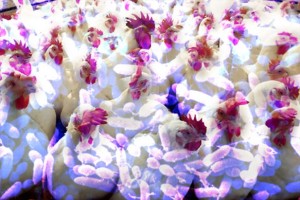Campylobacteriosis infections reported in humans have now stabilised, after several years of an increasing trend, but it is still the most commonly reported foodborne disease in the EU. Listeriosis and VTEC infections in humans have increased, while reported salmonellosis and yersiniosis cases have decreased. These are some of the key findings of the European Union Summary Report on Trends and Sources of Zoonoses, Zoonotic Agents and Foodborne Outbreaks in 2013.
 “The stabilisation of campylobacteriosis cases and the continuing downward trend of salmonellosis is good news, but we should not lower our guard as reporting of other diseases such as listeriosis and VTEC infections is going up,” says Marta Hugas, Head of Department of EFSA’s Risk Assessment and Scientific Assistance Department, who stresses the importance of monitoring foodborne illnesses in Europe.
“The stabilisation of campylobacteriosis cases and the continuing downward trend of salmonellosis is good news, but we should not lower our guard as reporting of other diseases such as listeriosis and VTEC infections is going up,” says Marta Hugas, Head of Department of EFSA’s Risk Assessment and Scientific Assistance Department, who stresses the importance of monitoring foodborne illnesses in Europe.
Last year’s report showed that human cases of campylobacteriosis decreased slightly for the first time in five years. The 2013 figures have stabilised to the levels reported in 2012. Nevertheless, with 214,779 cases, campylobacteriosis remains the most commonly reported foodborne disease in the EU. In food , the causative agent, Campylobacter, is mostly found in chicken meat.
Listeriosis cases increased by 8.6 percent between 2012 and 2013 and have been increasing over the pastfive years. Although the number of confirmed cases is relatively low at 1,763, these are of particular concern as the reported Listeria infections are mostly severe, invasive forms of the disease with higher death rates than for the other foodborne diseases. “The rise of reported invasive listeriosis cases is of great concern as the infection is acquired mostly from ready-to-eat food and it may lead to death, particularly among the increasing population of elderly people and patients with weakened immunity in Europe”, says Mike Catchpole, the Chief Scientist at ECDC. Despite the rise of listeriosis cases reported in humans, Listeria monocytogenes, the bacterium that causes listeriosis in humans and animals, was seldom detected above the legal safety limits in ready-to-eat foods.
Reported cases of verocytotoxin-producing E. coli (VTEC) infection rose by 5.9 percent – possibly an effect of increased awareness in Member States following the outbreak in 2011, which translated into better testing and reporting. No trends were observed on the presence of VTEC in food and animals.
Salmonellosis cases fell for the eighth year in a row, with 82,694 cases –a 7.9 percent decrease in the notification rate compared with 2012. The report attributes the decrease to Salmonella control programmes in poultry and notes that most Member States met their reduction goals for prevalence in poultry for 2013. In fresh poultry meat, compliance with EU Salmonella criteria increased – a signal that Member States’ investments in control measures are working.
Yersiniosis, the third most commonly reported zoonotic disease in the EU with 6,471 cases, has been decreasing over the past five years and declined by 2.8 percent compared with 2012.
The EFSA-ECDC report covers 16 zoonoses and foodborne outbreaks. It is based on data collected by 32 European countries (28 Member States and four non-Member States) and helps the European Commission and EU Member States to monitor, control and prevent zoonotic diseases.
 Cases have been reported by Belgium, Denmark, Luxembourg, the Netherlands, Norway, Sweden and the UK. In addition, Croatia reported a cluster of cases, including one death, possibly associated with this outbreak.
Cases have been reported by Belgium, Denmark, Luxembourg, the Netherlands, Norway, Sweden and the UK. In addition, Croatia reported a cluster of cases, including one death, possibly associated with this outbreak.








